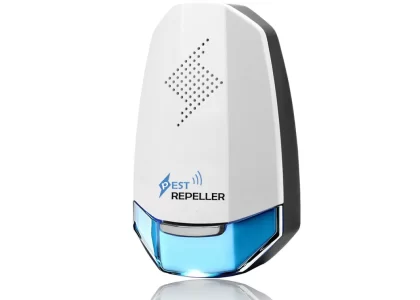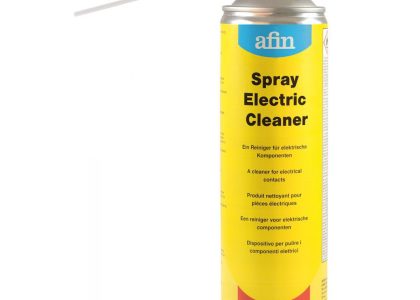 Introduction:
Introduction:
Maintaining a clean and efficient front loader washing machine is essential for optimal performance and longevity. Over time, detergent residue, dirt, and mildew can accumulate inside the machine, affecting its cleaning ability and leaving unpleasant odors. In this comprehensive guide, we will explore the steps and tips for effectively cleaning a front loader washing machine. By understanding the cleaning process, removing buildup, and preventing future issues, individuals can ensure their laundry is fresh and the machine operates at its best.
Common materials of Washing Machine:
Washing machines can be made from different materials, but the most common materials used for their construction are:
Steel: Many washing machines feature a metal frame or casing made of steel. Steel is durable and provides strength and stability to the machine. The exterior may be coated with enamel or paint for protection and aesthetics.
Plastic: Washing machines also incorporate plastic components, such as control panels, detergent dispensers, and internal parts. Plastic is lightweight, resistant to water and chemicals, and helps reduce vibration and noise during operation.
Stainless Steel: Some high-end or commercial-grade washing machines may have stainless steel drums. Stainless steel is rust-resistant, durable, and offers better protection against stains and odors. It is also more hygienic than plastic or porcelain-coated drums.
Porcelain-coated: The drum inside the washing machine is often coated with porcelain for smoothness and improved resistance to chips and scratches. This coating helps protect the clothes and prevents damage during the wash cycle.
Glass: In some washing machines, the door or lid may incorporate a glass or tempered glass panel. This allows users to monitor the washing process without opening the machine and provides a sleek and modern appearance.
It’s important to keep in mind that while the materials used in washing machines contribute to their performance and durability, the internal components and mechanisms also play a significant role in their overall functionality. It’s advisable to choose a washing machine from reputable brands that offer reliable performance and quality materials.
 Cleaning Supplies and Safety Precautions
Cleaning Supplies and Safety Precautions
Cleaning Supplies:
Gather the following supplies: white vinegar, baking soda, a soft sponge or cloth, a toothbrush, and a clean towel.
These widely available and affordable items will help remove dirt, odors, and buildup from the machine.
Safety Precautions:
Before cleaning, make sure to unplug the washing machine to avoid any electric shock.
Additionally, avoid using abrasive materials or chemicals that may damage the machine’s surfaces.
Cleaning the Drum and Door Seal
Wipe the Drum:
Mix equal parts water and white vinegar in a spray bottle.
Spray the mixture inside the drum and wipe it with a soft sponge or cloth to remove any dirt or buildup.
Clean the Door Seal:
Inspect the door seal for any visible dirt or mildew.
Use the vinegar and water mixture or a mild detergent to clean the seal thoroughly.
Gently scrub any hard-to-reach areas with a toothbrush to remove stubborn residue.
Removing Detergent and Fabric Softener Buildup
Dispenser Drawer Cleaning:
Remove the detergent and fabric softener dispenser drawer from the machine.
Rinse it under hot water to remove any residues, then clean it with a toothbrush and mild detergent.
Pay special attention to the compartments and ensure they are clear of any clogs or buildup.
Deep Cleaning the Dispenser Housing:
Mix equal parts water and vinegar and dip a soft sponge or cloth into the mixture.
Thoroughly wipe inside the dispenser housing to remove any remaining detergent or fabric softener residue.
Use a toothbrush to reach into hard-to-reach areas, if necessary.
Descaling and Deodorizing
Descale with Vinegar:
Fill the detergent dispenser drawer with two cups of white vinegar.
Run the washing machine on a normal cycle using hot water.
The acidity of the vinegar helps remove mineral deposits and scale buildup.
Remove Odors with Baking Soda:
Sprinkle half a cup of baking soda directly into the drum of the machine.
Run the washing machine on a normal cycle at a high temperature.
Baking soda neutralizes odors and leaves the machine smelling fresh.
 Routine Maintenance and Preventive Measures
Routine Maintenance and Preventive Measures
Leaving the Door Open:
After each laundry cycle, leave the door of the washing machine open for a few hours.
This allows the moisture to evaporate, preventing the growth of mildew and eliminating any potential odors.
Incorporate a monthly or quarterly cleaning routine for your front loader washing machine to prevent excessive buildup.
Follow the steps mentioned above to maintain a clean and efficient machine.
 Several advantages of Cleaning a front loader washing machine:
Several advantages of Cleaning a front loader washing machine:
Improved Efficiency: Regular cleaning of a front loader washing machine helps to maintain its efficiency. Over time, dirt, grime, and detergent residue can build up inside the machine, obstructing water flow and reducing its cleaning power. By cleaning the machine, you can ensure optimal performance and efficient cleaning of your laundry.
Odor Prevention:
Front loaders are more prone to developing musty odors due to the accumulation of moisture in the rubber seal and detergent residue. Cleaning the machine helps to remove these odors, keeping your laundry smelling fresh and clean.
Extended Lifespan:
Neglecting the cleanliness of a front loader washing machine can lead to issues like mold growth, clogged filters, or damage to the drum. Regular cleaning helps prevent these problems and can extend the lifespan of your machine, saving you from costly repairs or replacements.
Hygiene:
A clean washing machine ensures that your laundry is washed in a hygienic environment. Removing dirt, bacteria, and mildew from the machine helps to prevent the transfer of these contaminants onto your clothes, promoting cleaner and healthier laundry.
Energy Efficiency:
A clean front loader can operate more efficiently, leading to potential energy savings. When the machine is free from obstructions and buildup, it can distribute water and detergent more effectively, reducing the need for additional wash cycles.
Improved Aesthetics:
Cleaning the interior and exterior of your front loader washing machine helps to maintain its appearance. By removing residue or stains, you can keep your machine looking clean and presentable.
Overall, regular cleaning of a front loader washing machine provides various benefits, including improved efficiency, odor prevention, extended lifespan, enhanced hygiene, energy savings, and better aesthetics. It is recommended to follow the manufacturer’s guidelines for cleaning and maintenance to ensure the best performance and longevity of your machine.
 Conclusion:
Conclusion:
Cleaning a front loader washing machine is crucial for maintaining its performance and ensuring laundry is fresh and clean. By following the steps outlined in this comprehensive guide, individuals can effectively remove dirt, detergent residue, and odors from their machines. From cleaning the drum and door seal to removing buildup in the dispenser drawer, these cleaning techniques will help maintain the machine’s efficiency and extend its lifespan. With routine maintenance and proper preventive measures, individuals can enjoy fresh, clean laundry while keeping their front loader washing machines in optimal condition for years to come.





